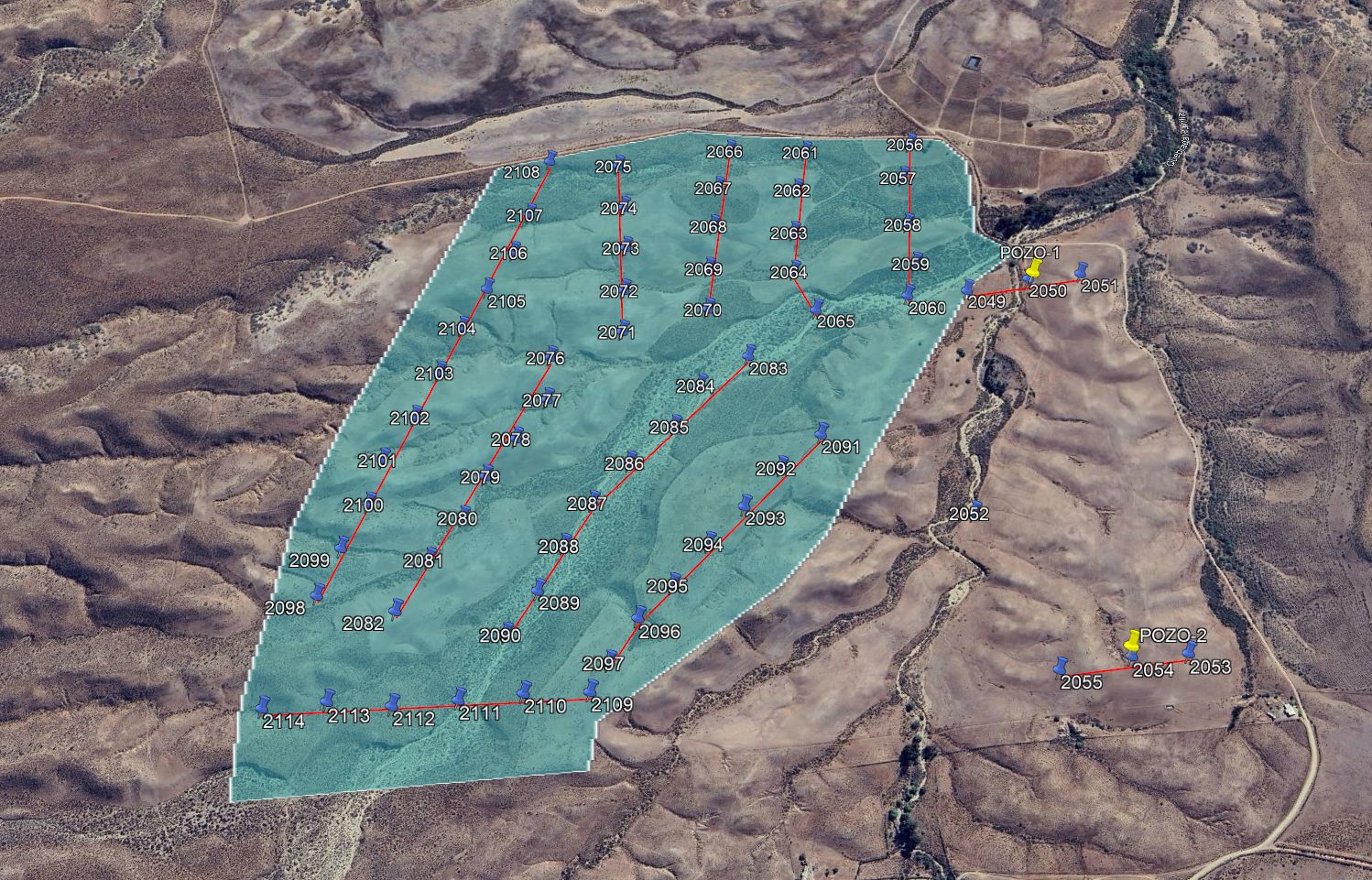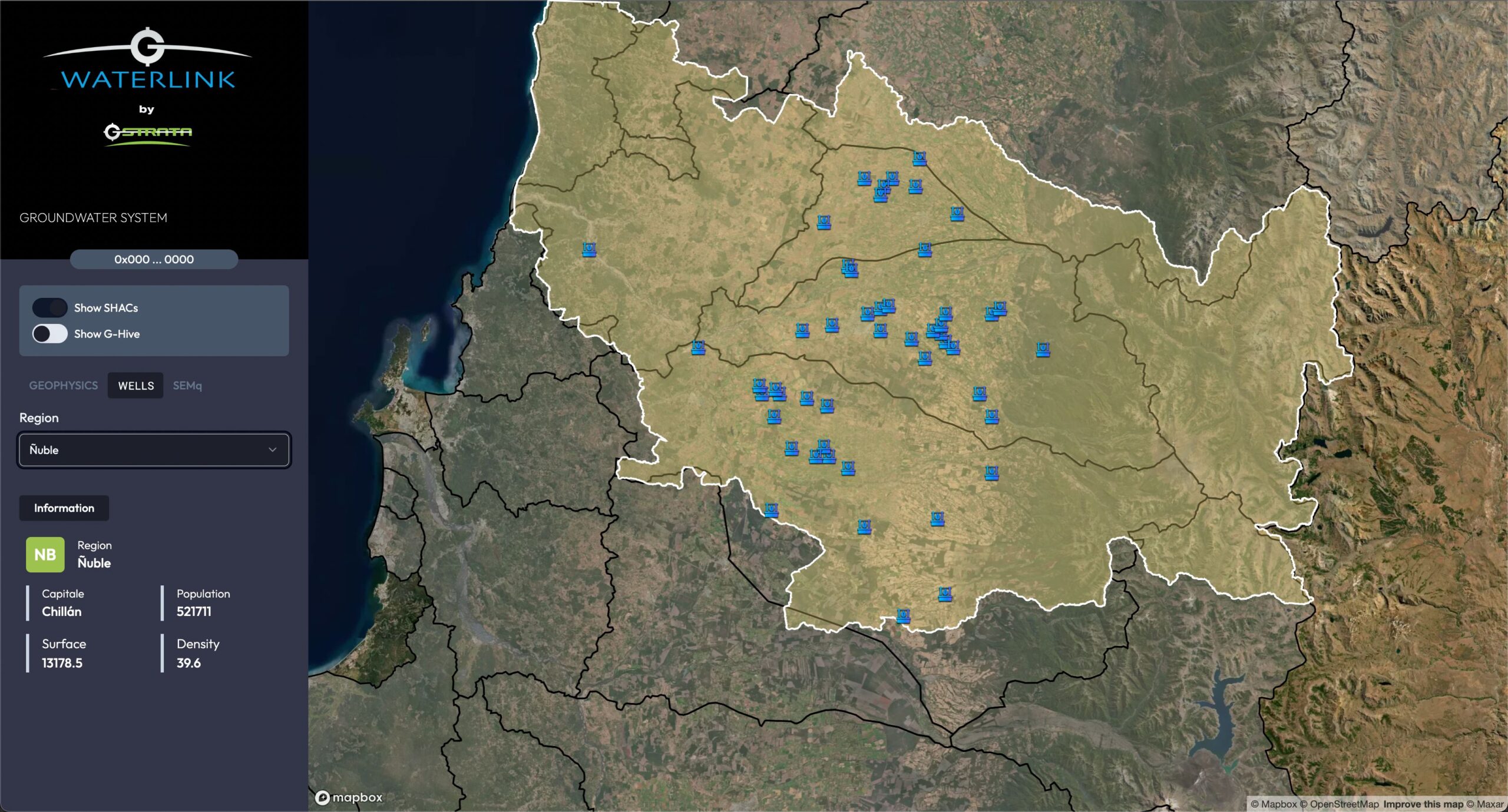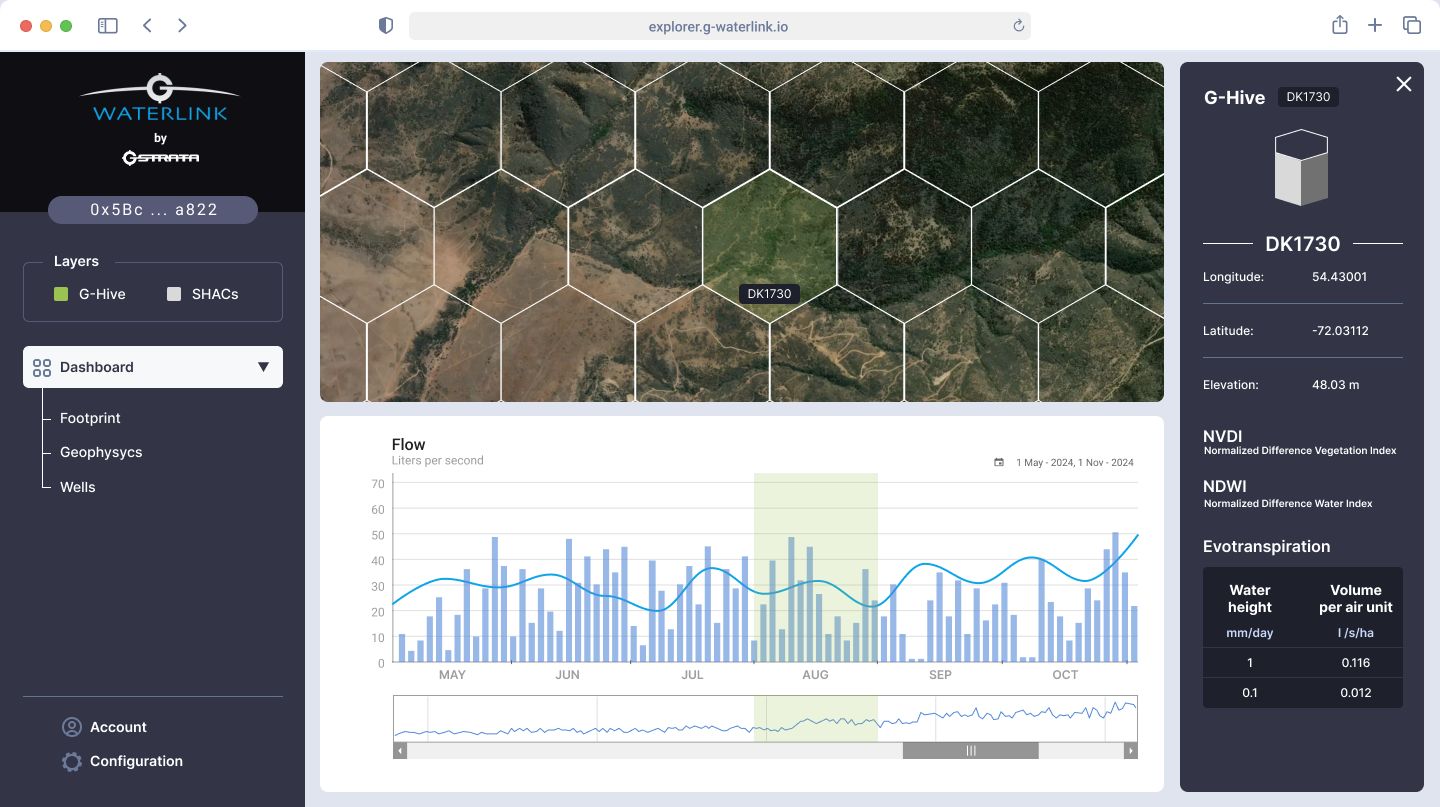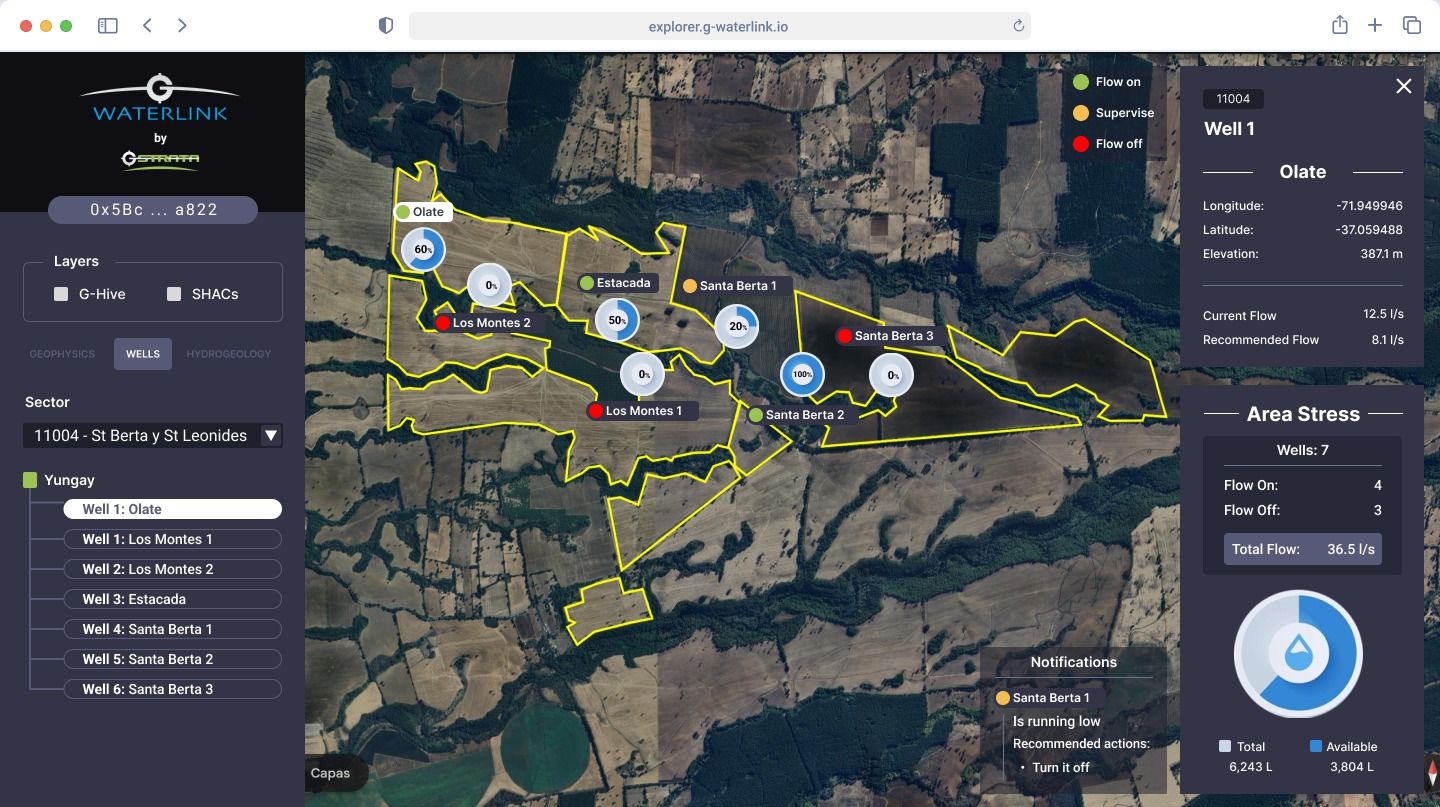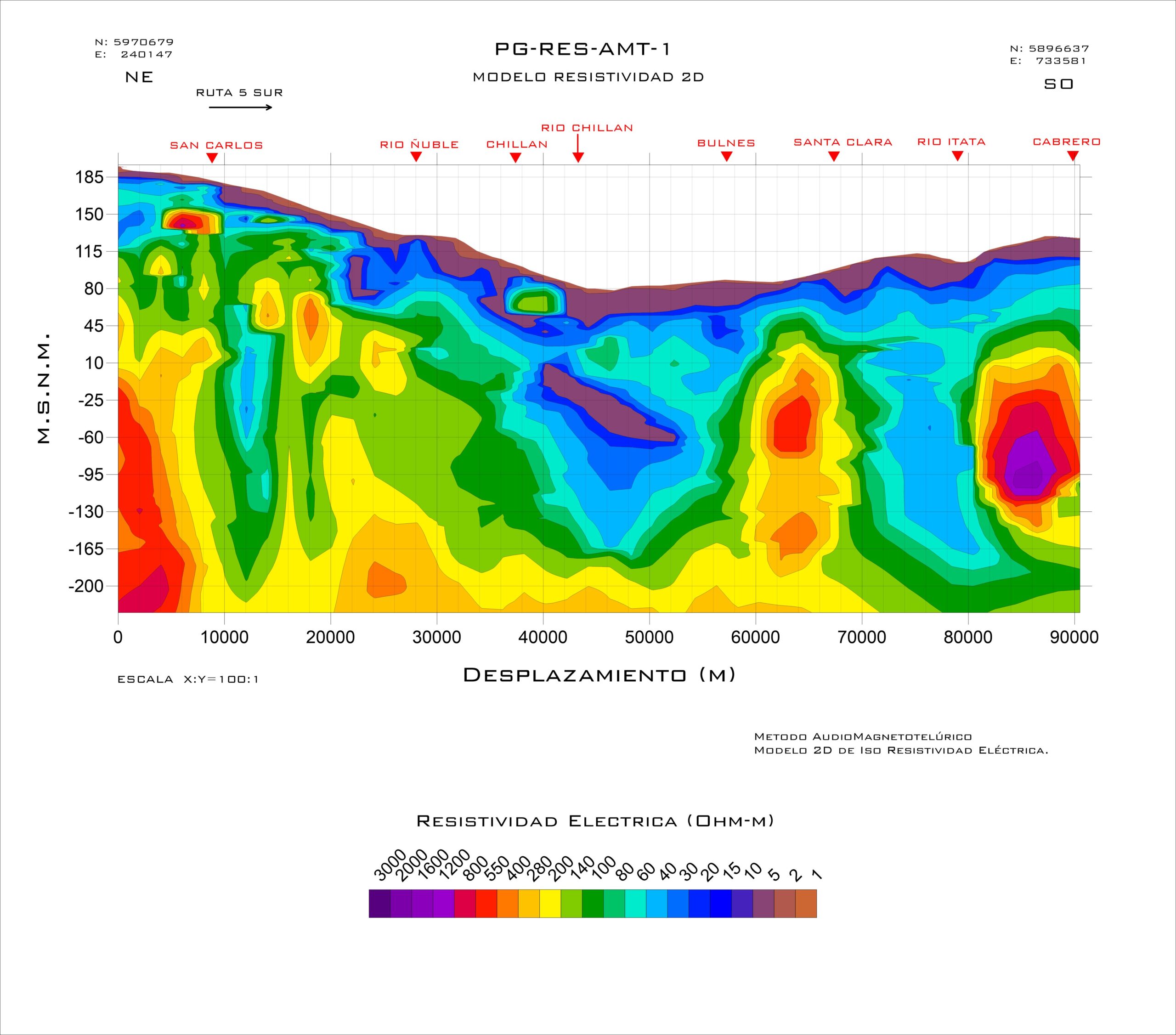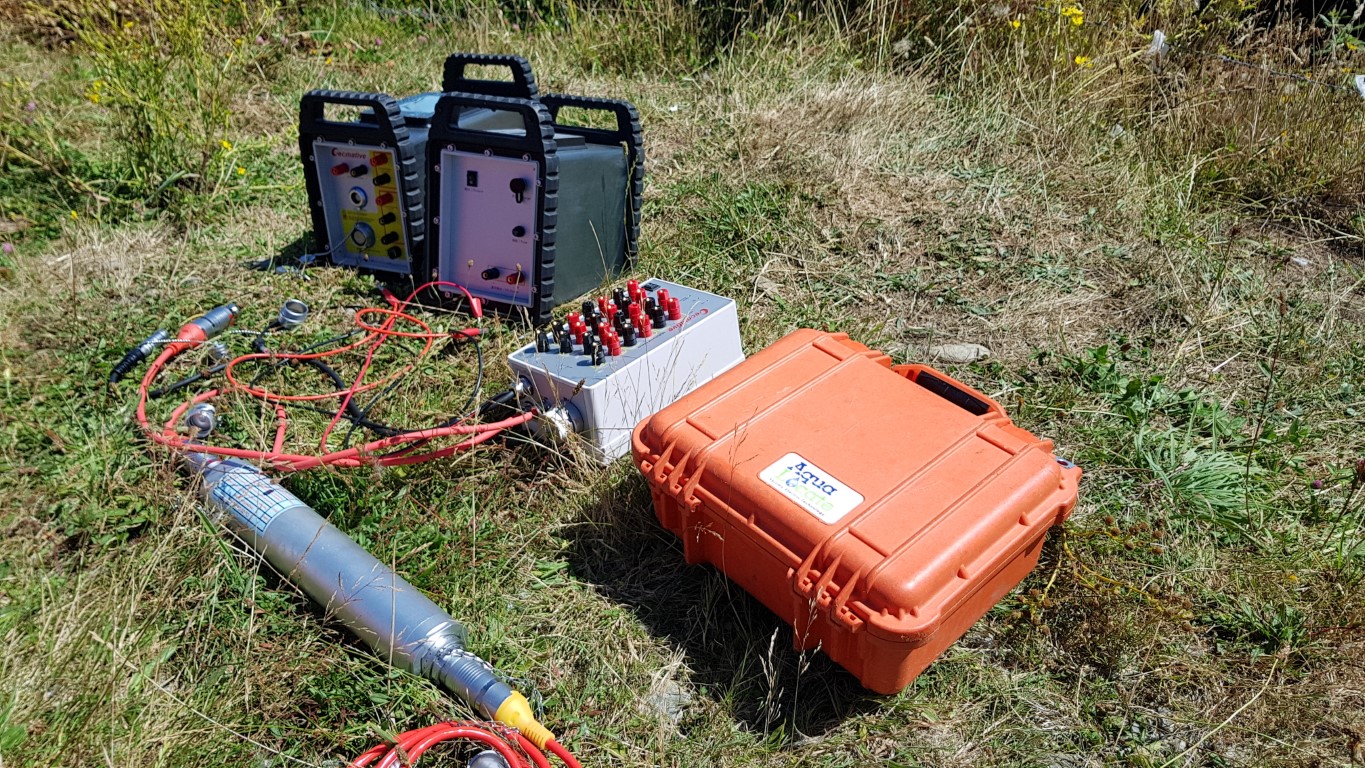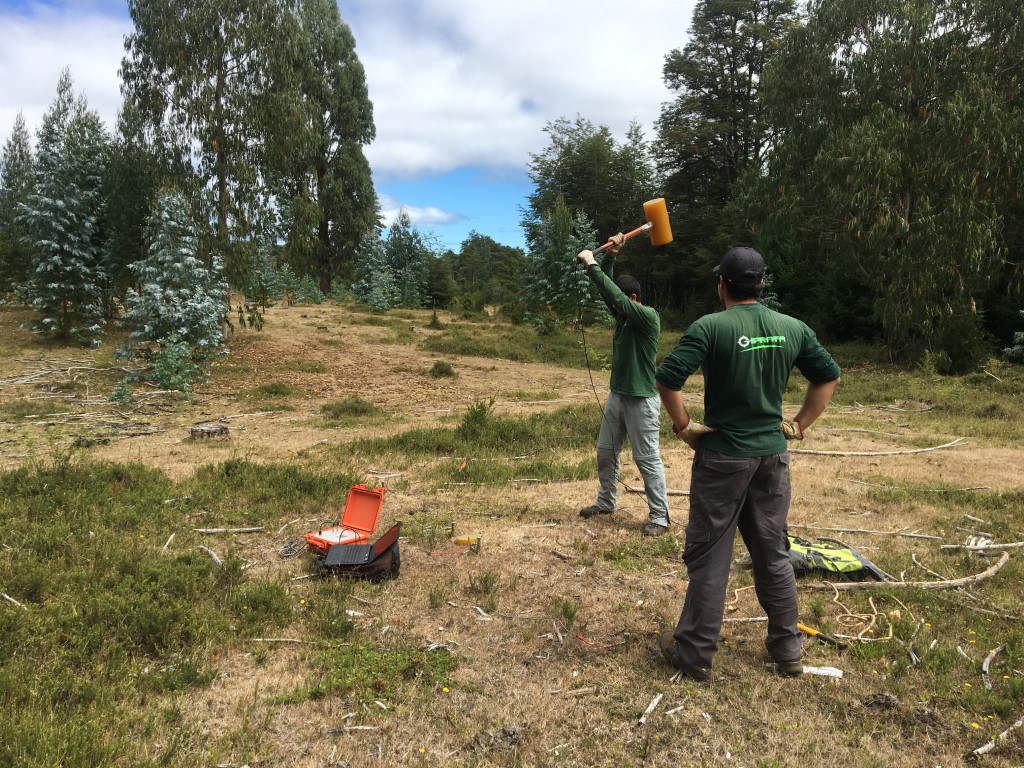Groundwater is an essential resource that powers agriculture, governments, and industries globally. In the case of agriculture, it represents the backbone of irrigation worldwide, with almost 40% of irrigated land depending on water extracted from wells. This resource generates an annual economic contribution of between 210,000 and 230,000 million dollars, highlighting its importance in guaranteeing food security and economic development.
Governments and industries face the growing challenge of efficiently managing this finite resource. From water planning to the optimization of its use, the exploration and characterization of underground aquifers become indispensable tools for making informed decisions.
At G Strata, we combine innovation and technology to meet these challenges. Our proprietary S.E.R. methodology, along with satellite data analysis, GIS tools, and well surveys, allows aquifers to be accurately located, quantified, and characterized. This not only helps to optimize water use, but also supports governments in resource planning and industry in the sustainability of their operations.
Our technology transforms water management into an opportunity to build a more sustainable future, maximizing the economic and environmental benefits of groundwater. With G Strata, we provide solutions for the most demanding water challenges.
S.E.R. Technology: Innovation in Groundwater Exploration
The S.E.R. (Resistive Electrical Seismic) technology is an advanced geophysical methodology that integrates the seismoelectric (SE) and electrical resistivity (RES) methods. Its objective is to provide a comprehensive view of the subsoil, combining two complementary approaches:
- SE Method Allows direct detection of signals associated with groundwater.
- RES Method Analyze the impact of water on the environment, identifying lithology and stratigraphy. Any method that measures the electrical resistivity of the subsurface can be used, such as TRE, AMT or TEM, among others.
Main Benefits:
- Accurate aquifer identification: Determines the presence, depth, and thickness of groundwater.
- Flow estimation: It offers reliable projections to optimize resources.
- Optimización de pozos: Ayuda a seleccionar el lugar más eficiente para perforar, evitando pozos secos o de baja capacidad.
- Affordable hydrogeological models: Ideal for water-stressed areas, providing essential data at a low cost.
With S.E.R., information comparable to that of a physical well can be obtained, making it a robust and effective tool for hydrogeological, agricultural, and water resource management projects.

